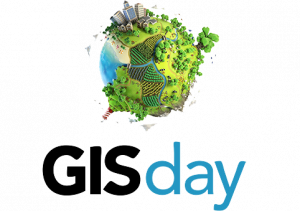This week, geographers around the globe took some time to celebrate the software that allows them to analyze, well, that very same globe. November 13th marked the 20th annual GIS Day, an “international celebration of geographic information systems,” as the official GIS Day website puts it.
But while GIS technology has revolutionized the way we analyze and visualize maps over the past two decades, the high cost of ArcGIS products, long recognized as the gold standard for cartographic analysis tools, is enough to deter many people from using it. At the University of Illinois and other colleges and universities, access to ArcGIS can be taken for granted, but many of us will not remain in the academic world forever. Luckily, there’s a high-quality alternative to ArcGIS for those who want the benefits of mapping software without the pricetag!
QGIS is a free, open source mapping software that has most of the same functionality as ArcGIS. While some more advanced features included in ArcGIS do not have analogues in QGIS, developers are continually updating the software and new features are always being added. As it stands now, though, QGIS includes everything that the casual GIS practitioner could want, along with almost everything more advanced users need.
As is often the case with open source software alternatives, QGIS has a large, vibrant community of supporters, and its developers have put together tons of documentation on how to use the program, such as this user guide. Generally speaking, if you have any experience with ArcGIS it’s very easy to learn QGIS—for a picture of the learning curve, think somewhere along the lines of switching from Microsoft Word to Google Docs. And if you don’t have experience, the community is there to help! There are many guides to getting started, including the one listed in the above link, and more forum posts of users working through questions together than anyone could read in a lifetime.
For more help, stop by to take a look at one of the QGIS guidebooks in our reference collection, or send us an email at sc@library.illinois.edu!
Have you made an interesting map in QGIS? Send us pictures of your creations on Twitter @ScholCommons!



